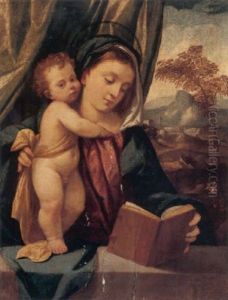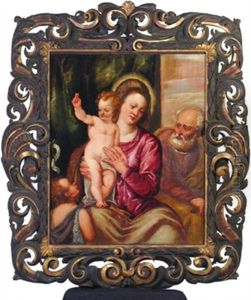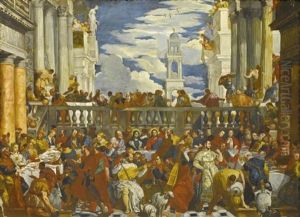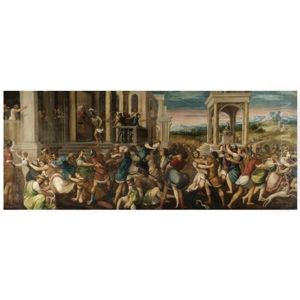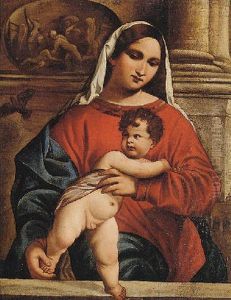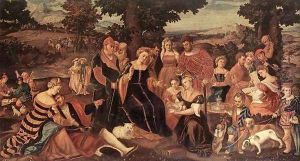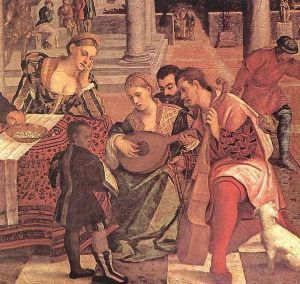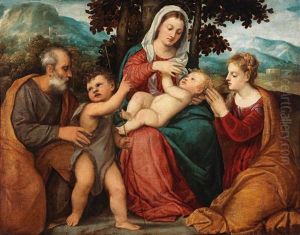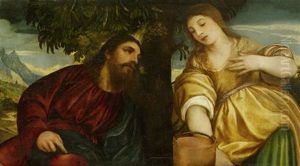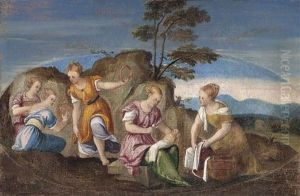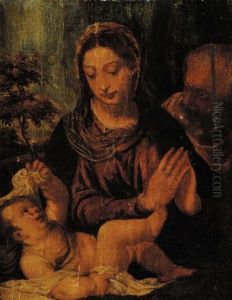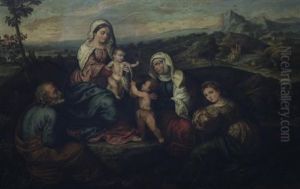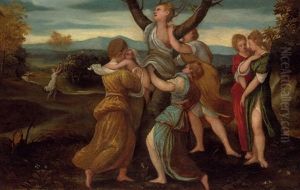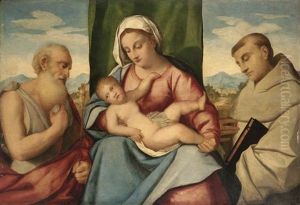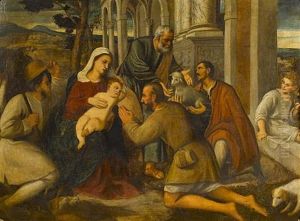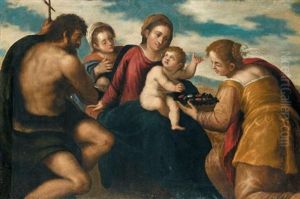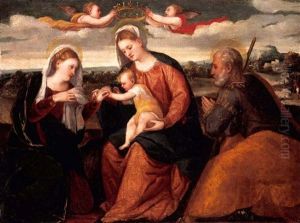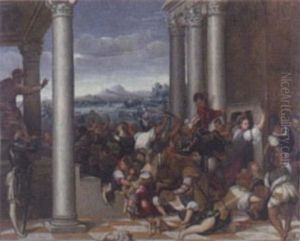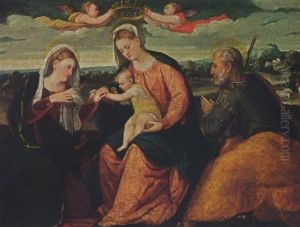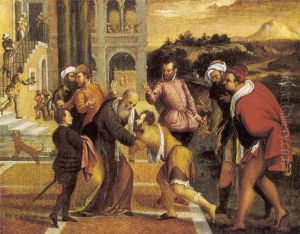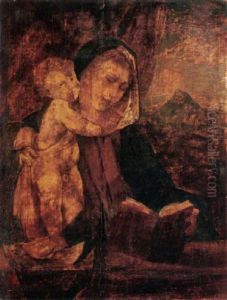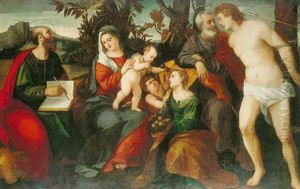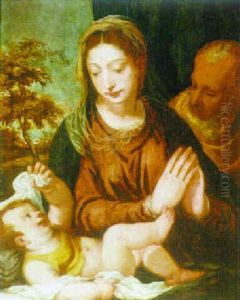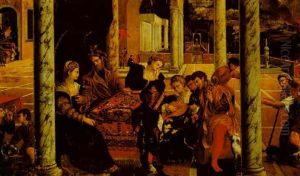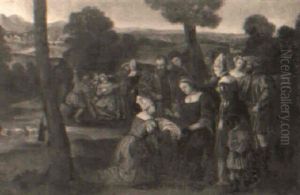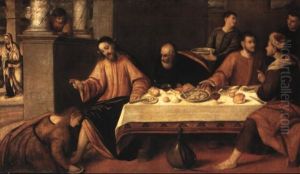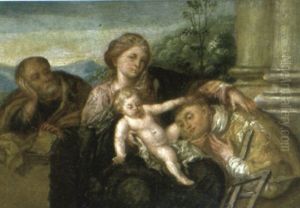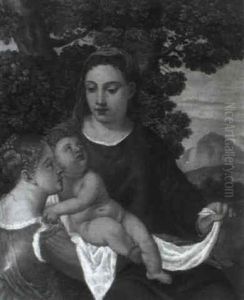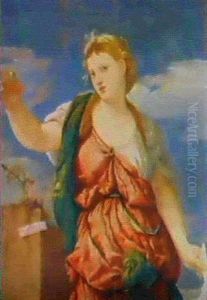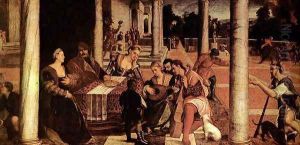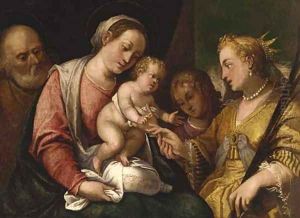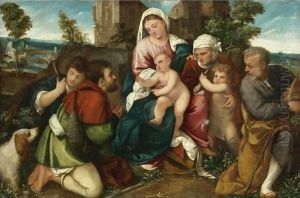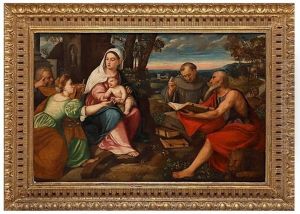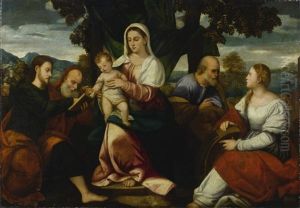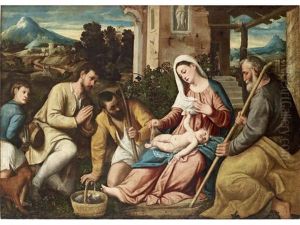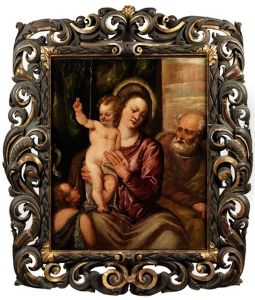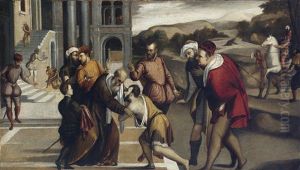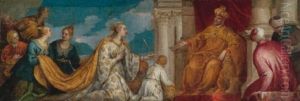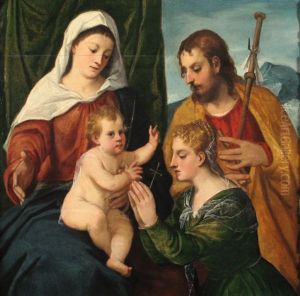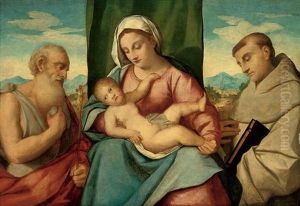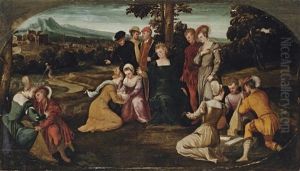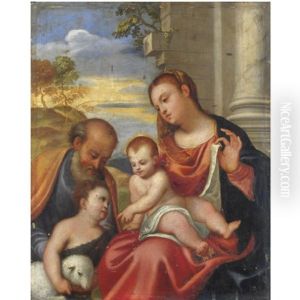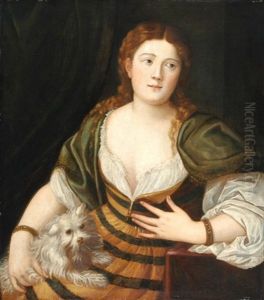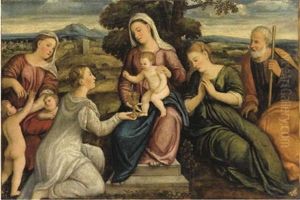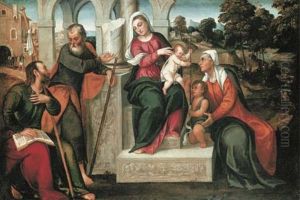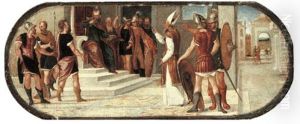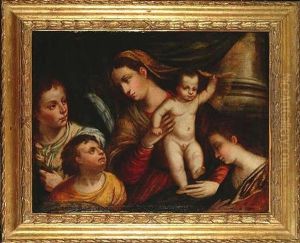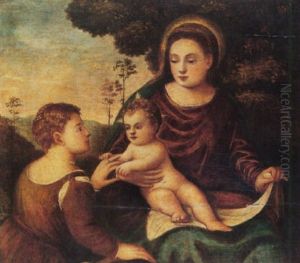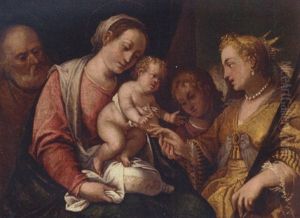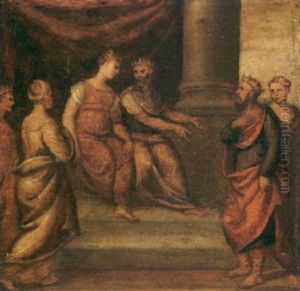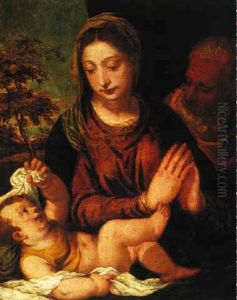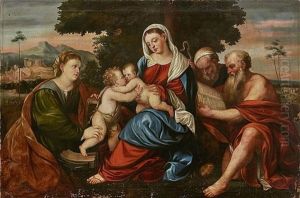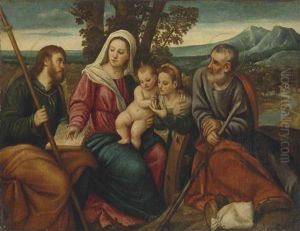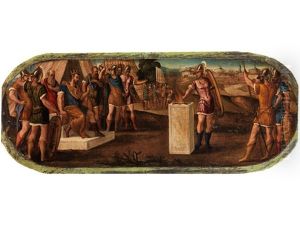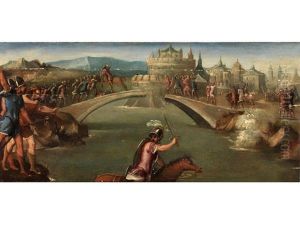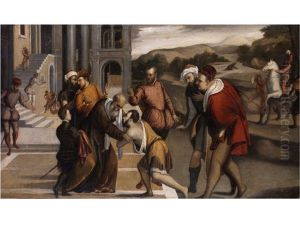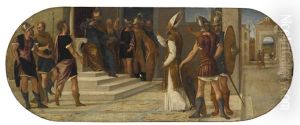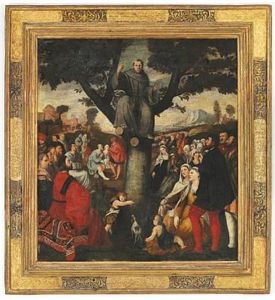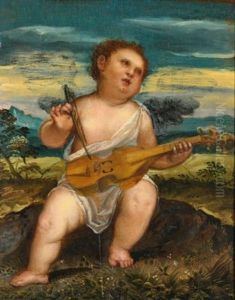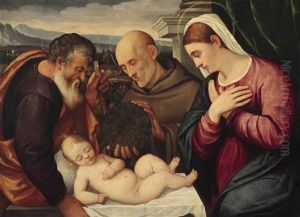Bonifazio Veronese Paintings
Bonifazio Veronese, born Bonifazio de' Pitati in Verona in 1487, was an Italian Renaissance painter who played a significant role in the Venetian school of painting. Despite his birthplace, Bonifazio spent the majority of his career in Venice, where he absorbed the rich influences of the Venetian Renaissance, becoming a notable figure among his contemporaries. His works are celebrated for their vibrant color, expressive narratives, and the harmonious integration of landscape and figures, reflecting the advancements of Venetian art during the 16th century.
Bonifazio moved to Venice at a young age, where he likely trained under Palma Vecchio, another prominent Venetian painter. Throughout his career, he developed a style that was deeply influenced by the works of Giorgione and Titian, leading to a mastery of color and composition that distinguished his paintings. He became well-known for his religious compositions, mythological scenes, and portraits, often imbued with a serene and idyllic quality that became characteristic of the Venetian Renaissance.
His work was sought after by the Venetian nobility and religious institutions, for whom he created large altar pieces, narrative scenes from the Bible, and mythological paintings that decorated the walls of Venice's palazzi and churches. Among his notable works are the 'Feast in the House of Levi', originally attributed to Veronese but later to Bonifazio, and 'The Finding of Moses', which exemplifies his skill in depicting intricate landscapes and figures in harmonious composition.
Despite his success, Bonifazio Veronese's life was not without challenges. The competition among artists in Venice was fierce, and Bonifazio had to navigate the intricate social and political networks of the Venetian Republic to secure commissions. Nevertheless, he maintained a successful career until his death in 1553 in Venice, leaving behind a legacy that would influence the Venetian school of painting for generations.
Bonifazio Veronese's contribution to the Renaissance is significant, as he bridged the gap between the High Renaissance and the emerging Venetian style that would come to dominate the late 16th century. His works are preserved in many of the world's leading museums, testament to the enduring appeal of his artistic vision and the beauty of the Venetian Renaissance.
